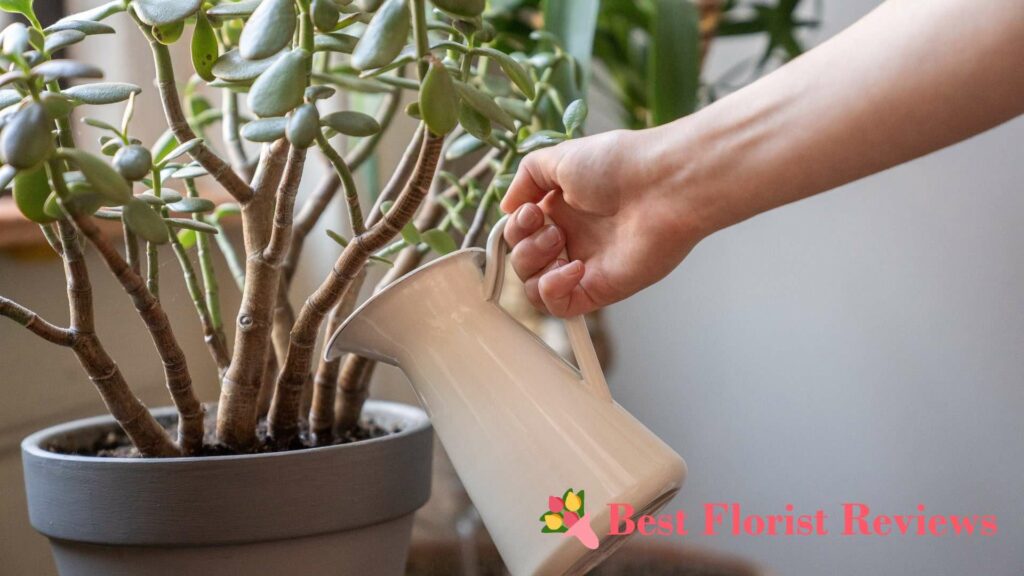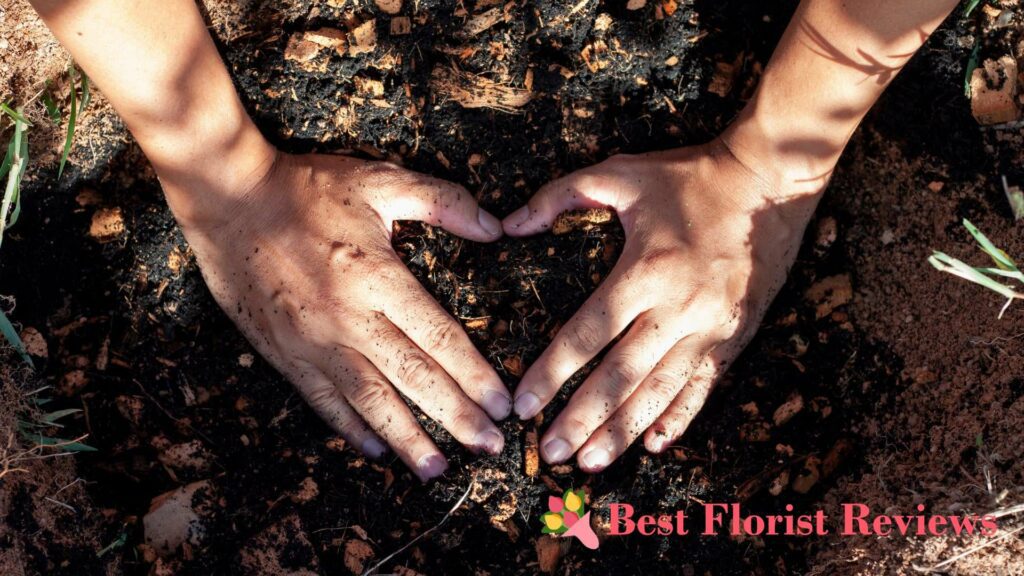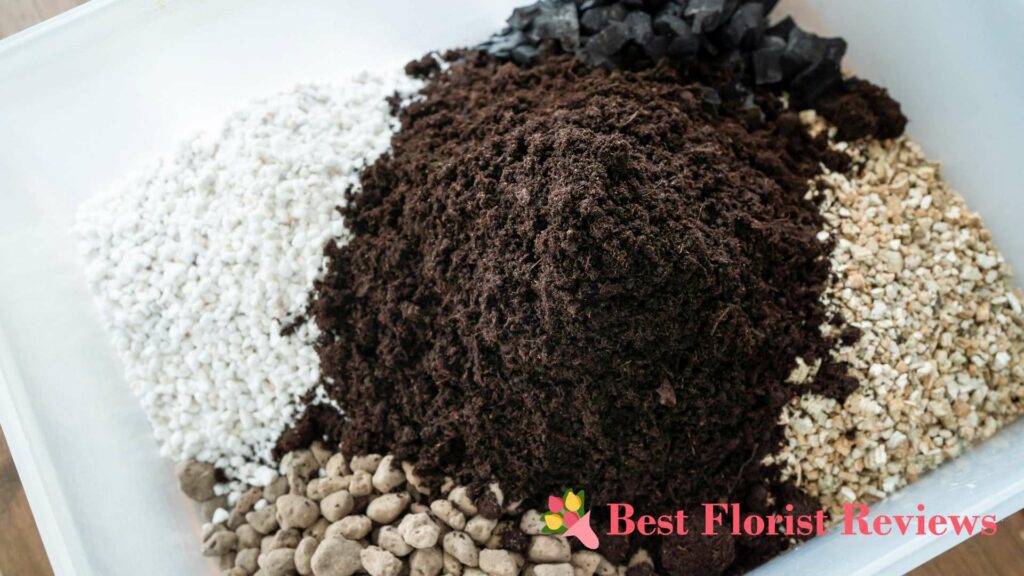The best soil for a jade plant is a well-draining, highly porous mix with a gritty and sandy texture. Jade plants also thrive in slightly acidic soil, preferably with a pH of 6.0 to 7.0.
In this guide, we’ll help you make the perfect soil mix to keep your jade plant not just alive but thriving. We’ll discuss everything, from the things to consider when choosing and making a soil mix to the components and recipes you can follow.
Things to Consider When Choosing Soil for a Jade Plant
Drainage


The most important thing you should consider when choosing soil for your jade plant is drainage. The soil should have great draining capacity to avoid exposing the plant to excessive moisture.
Remember that jade plants are succulents, so they absorb water and store it in their leaves. The soil doesn’t have to retain as much moisture as it does for other plants.
They’re also native to South Africa, so they’re more used to warm and dry growing conditions. There’s no need for heavy clay soils since they’re extremely drought tolerant and can last for weeks, sometimes months, with no water.
pH Level


Jade plants prefer the soil to be slightly acidic, ideally in the 6.0 to 7.0 pH range. They can survive in soil with a 5.5 pH, but it’s best not to go lower than this, as it can affect the plant’s growth.
The soil’s pH level plays a crucial role in ensuring the plant’s absorption of nutrients. If the pH is too low or too high, the plant won’t be able to absorb the necessary nutrients like nitrogen, phosphorus, and potassium.
Your jade plant’s root health is also greatly affected by the pH of the soil they’re growing in. Extreme pH levels can stress the roots and cause the plant’s overall health to worsen.
Porosity


A jade plant’s soil should be porous primarily for two reasons: to prevent root rot and to promote healthy root growth.
A porous soil allows air to penetrate the roots, providing them with enough oxygen. This is essential for the plant’s health since oxygen helps the root absorb water and nutrients more efficiently.
Moreover, the plant is less likely to suffer from root rot if the soil is porous. When it’s porous, it prevents water from accumulating in the root zone and subjecting the roots to excessive moisture.
Texture


A coarse, sandy-textured soil mimics the native growing conditions of jade plants, so it’s ideal to look for soil mixes with this texture.
Coarse soil mixes are also less likely to have clumps common in clay soil. These clumps can impair the soil’s draining capacity, leading to a higher probability of root rot.
These clumps will make it hard for the roots to grow and spread, causing the plant to have stunted growth. It’s best to add horticultural sand and perlite to the mix to improve its texture and create a more suitable growing environment for the jade plant.
Components of a Jade Plant Soil
Houseplant Compost
Houseplant compost will serve as the main base of the jade plant soil. It’s a nutrient-rich base specially formulated to provide an ideal environment for houseplants.
This is often sterilized or pasteurized, so there’s a lesser chance that it carries pests, diseases, or weed seeds, unlike most homemade compost. It’s also typically formulated to have a mild or neutral odor, which is more suitable for indoor use.
However, this may not have enough draining capacity for jade plants, so it’s best to add other components that can improve its drainage.
Cactus Soil
Cactus soil is designed specifically for potting cactus and succulents. Since jade plants fall into the succulent category, this is one of the ideal potting soils for them.
It has a coarse texture that jade plants particularly enjoy. It closely resembles their native growing environment, unlike loam and clay soil mix.
Cactus and succulents are prone to overwatering, so this soil mix contains ingredients that don’t hold onto water. This type of mix also features sand, which creates small gaps in the soil that enhance the soil’s porosity.
Coarse Sand
Coarse sand, with its large particle size and gritty texture, is an ideal amendment to a soil mix for jade plants. It aids in improving the soil’s drainage and porosity.
They’re about two millimeters wide, which is much larger than fine sand. This is better for jade plants, as it creates bigger gaps in the soil, allowing water to drain faster and air to reach the root zone.
Adding it to potting soil or houseplant compost can help break apart the lumps that may have developed with time. Just make sure to use only “horticultural” or “for gardening” labeled sand, as other types of sand might contain impurities that can be harmful.
Coco Coir
Coco coir is a natural fiber that’s obtained from coconut husks. It’s considered an environmentally friendly alternative to peat moss because it uses coconut husks that would otherwise go to waste.
One of the advantages of using coco coir is it can help improve the soil’s ability to retain moisture. While jade plants prefer their soil to be well-drained, they still need to absorb some amount of water to survive, so they can be a good addition to the mix.
If you’re using cactus soil alone, it might dry out too fast, not allowing the jade plant to absorb the necessary moisture. By incorporating coco coir into the mix, you can help them get sufficient amounts of water.
Perlite
Every well-draining soil mixture typically contains perlite because it’s known to help enhance the soil’s structure, aeration, and drainage.
It’s super lightweight, which makes it a great addition to a potting mix that’s already heavy.
Perlite can come in different grades, including coarse, medium, and fine. For jade plants, it’s best to choose coarse and medium-grade perlite since they are sandier and grittier.
Organic Matter
Organic matter can be decomposing plants, dead animals, manure, humus, or anything that’s primarily composed of carbon compounds.
Jade plants are not heavy feeders, but they’ll benefit from having essential elements like nitrogen, phosphorus, and potassium. Adding organic matter to the soil mix can help provide them with these nutrients.
Organic matter can also help buffer pH levels in soil mixes, preventing them from becoming too acidic or alkaline. If you add another substance that’s alkaline, it will release more hydrogen ions that can stabilize the soil’s pH.
Soil Mix Recipes for a Jade Plant


Recipe 1
- 2 parts houseplant compost
- 2 parts coarse sand
- 1 part perlite
This recipe uses houseplant compost as a base for the soil mix. The compost typically has enough nutrients to support the jade plant’s growth and development.
However, since it tends to be quite heavy for jade plants, adding two parts coarse sand and one part perlite can help improve the soil mix’s drainage and porosity.
Mix all the components together thoroughly to make sure the perlite and sand are providing enough texture to the mix. Putting them only on top of the compost will not do much to the compost’s draining capacity and porosity.
Recipe 2
- 2 parts cactus soil
- 1 part coco coir
- 1 part organic matter
This recipe is ideal for those who are growing cactus or other succulents since they probably have cactus soil already. Cactus soil provides excellent drainage since it’s meant for plants that don’t need a lot of moisture.
However, since jade plants are tropical succulents, not desert succulents, the soil may drain much faster than the plant needs. Adding one part of coco coir into the mix helps retain a considerable amount of moisture, which the jade plant will need.
Cactus soils are generally poor in nutrients since they focus on drainage. The one part of organic matter will help provide the jade plant with the nutrients it needs to grow and develop.
Signs That Jade Plant Is in the Wrong Soil
Mushy Roots
Mushy roots are often a result of poor drainage in the soil. Excess water accumulates in the root zone, causing root rots and leading to the root becoming mushy.
The soil may also become too compacted over time, limiting the amount of air reaching the roots. Inadequate aeration can contribute to root stress and susceptibility to fungi or bacteria that will cause the root to become mushy.
When this happens, repotting the jade to fresh soil mix is the only solution. Gently loosen the root ball during the repotting to help the plant grow healthier.
Yellowing or Dropping Leaves
Yellowing leaves can be a sign of nutrient deficiencies caused by the wrong soil mix. If the soil lacks essential nutrients or is too alkaline, the jade plant will not be able to take up nutrients properly.
Poor soil may also cause the leaves to wilt and drop. If the roots don’t receive enough oxygen because of the compact soil, they will suffocate and cause some leaves to die.
The jade plant is falling over
A jade plant falling over can be caused by various things, including poor soil condition.
If the soil isn’t draining enough, then the roots will likely weaken from too much moisture. They’ll be unable to support the plant, causing it to topple over.
Moreover, if the soil isn’t providing the plant with sufficient nutrients, the stems will grow thin and weaker. These stems will have a hard time supporting the leaves of the jade plant.



